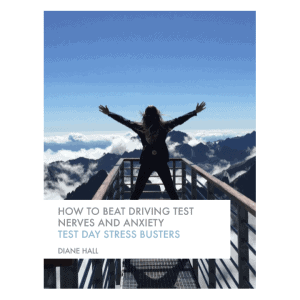Young Drivers Insurance
The cost of car insurance for under-25s is eye-wateringly high and expected to continue to rise. The average cost for a 17-22 year-old is already over £1,400/yr. However, you can cut costs.
This is a step-by-step guide to young drivers’ car insurance, helping you compare more than 100 providers in minutes, with specialised tricks, and dos and don’ts to save every spare penny.
13 ways to cut young driver costs
Did you know the average driver faces an annual insurance premium of £680, with drivers under the age of 25 paying over £1,400? Here are our top car insurance cost-cutting tips for young drivers that can save you £100s.
1) Most important point first … Always compare comparison websites
Too many people only use one comparison website to purchase car insurance … but you must get a quote from all 4 of them:
GoCompare
MoneySupermarket
Mustard
Confused
<br />
<iframe src=”http://www.awin1.com/cawshow.php?v=4445&s=607755&q=300103&r=438433&iframe=1″ width=”300″ height=”1050″ frameborder=”0″ border=”0″ scrolling=”no” marginheight=”0″ marginwidth=”0″></iframe><br />
2) Don’t assume third party is the cheapest
There are three different types of car insurance: third party only, third party fire and theft, and fully comprehensive.
Logically, third party insurance should be cheapest for young drivers as it offers a lesser level of cover than fully comp, yet this isn’t always the case.
The rationale is that insurers think people who choose third-party insurance are more of a risk. In one low-risk young driver quote, we found an annual £1,500 saving for having comprehensive cover over a third-party only policy.
3) Try adding a second responsible driver
Adding a second driver should push the cost up, yet bizarrely it can cut your costs. We tried adding a 40-year-old family member as an ‘occasional’ user (not a main driver) to an 18-year-old’s policy which cut the premium by around £1,000. These five tips show how it can cut your costs…
- Car insurance is all about risk. That’s why it can work, if you’re a high-risk driver and you add someone who is a much lower risk as a 2nd (and/or 3rd) driver, they can bring down the average risk and you may get a cheaper policy.
- This isn’t just for young drivers. While it works well for young drivers as they are automatically seen as a high risk and know many people, like their parents, who may be lower risk it can work for anyone – but of course is especially powerful for those with costlier insurance.
- The better the driving history and lower their risk, the more impact it should have.Those with a good driving record are likely to help make the most savings, but anyone who’s a lower risk can help. By law insurers can’t discriminate over gender, but age, driving experience and history can make a difference.
- This is about trial and error not logic. Your mum may increase the cost, your brother may cut it, or vice-versa. It’s just a question of trying different quotes and seeing what happens.
- Different insurers respond in different ways: One may cut your costs adding your uncle, another may increase it. Therefore a quick way to check is by varying quotes on comparison sites – it’s easy to do, see our top comparison sites list below.
- The second driver should be someone who would reasonably drive your car. So don’t add Lewis Hamilton, unless you happen to be his brother (and even then racing drivers are likely a very high risk so I wouldn’t bother) – but your mum, son, best mate or gran should be ok – as long as they would drive the car.
- Never add someone as main driver if they’re not. This is known in the industry as ‘fronting’ and is fraud. If you do it and are caught you can face a criminal conviction and your insurance will likely be invalid.
Here are some successes to inspire you…
As a young new driver my insurer wanted £5,000 but after adding mum and dad it dropped to £1,900.@Faevouritexox
Took your advice and added my mum to my car insurance and saved £500 #mumstheword.@mazzyb5
4) Ensure you always minimise your risk
Whether or not you’re a young driver, insurance premiums (the payments made to insurance companies) depend on three things:

Car insurance rates are set by actuaries, whose job is to calculate risk. You can make big savings by showing an insurer you’re not the typical high-risk young driver.
Each insurer’s price depends on two things: the underwriters’ assessment of your particular situation, and the pricing model that dictates the type of customers the insurer wants to attract.
5) Tell your insurer about special circumstances
If you haven’t got ‘normal’ circumstances, eg, you’ve made a claim in the past few years, have a modified car or expect to drive 100,000`s of miles a year, tell your insurer. If you don’t and then try to claim, even for an unrelated issue, your policy may be invalid.
You also need to tell your insurer about any changes as this reduces potential problems in the event of a claim, even if it’s just your address. Trying to get insurance after you’ve had a policy cancelled is very difficult, very expensive and will follow you for the rest of your life.
A change in circumstances includes moving jobs, as insurers believe this can affect your risk. Scandalously, the unemployed often (though not always) pay higher rates for their car insurance – so tell your provider if you’re out of work.
6) DON’T pimp your car
Sexy it might be, MoneySaving it ain’t. The more changes you make to your car, barring security ones, the more you’ll be charged.
Always make sure you inform your insurer of any modifications to your car, whether you made them or not, or it may invalidate your policy.
7) Set the right excess without breaking the bank
It’s worth thinking about going for a policy with a higher excess – the amount of any claim you need to pay yourself. A higher excess will result in lower premiums but make sure you can afford the premium in the event you need to claim.
Many people find that claiming for less than £500 of damage both increases the future cost of insurance and can invalidate no-claims bonuses, meaning it’s not always worth making a claim.
So why pay extra for a lower excess? A few insurers will substantially reduce premiums for a £1,000 excess, so try this when getting quotes. The downside of this is if you have a bigger claim you’ll have to shell out more, so take this into account.
8) Never lie to the insurer
With insurance, remember – the golden rule is:
Tell them the truth, the whole truth and nothing but the truth.
If you’ve read these tips and thought, “it’s easy to lie about this”, then of course, you’re right. Yet lying on your insurance form is fraud. It can lead to your insurance being invalidated and, in the worst case, a criminal prosecution for driving without insurance.
9) Tweak your job description
 Another quick win is tweaking your job description (legitimately of course). An illustrator is often cheaper than an artist, an editor than a journalist, a PA than a secretary.
Another quick win is tweaking your job description (legitimately of course). An illustrator is often cheaper than an artist, an editor than a journalist, a PA than a secretary.
10) Never auto-renew
Nothing better illustrates car insurers preying on loyal customers than Sarah Cooper’s tweet. “My car insurance renewal is £1,200. New policy with same company is £690. How do they justify this?” They don’t. They just do it.
Insurers charge increasing amounts each year, knowing inertia will stop policyholders switching. If your renewal is coming up, jot it in your diary to remember it. Compare comparison sites and then call your insurer to see if they can match, or even beat, the best quote you found. If they can, you’re quids in.
Will my insurer remind me when it’s time to renew?
11) If you live with parents try multi-car policies
If you’ve two or more vehicles between friends or family members in your household (vans can be included in this but bikes usually aren’t), some providers offer discounts if you insure them together. Comparison sites don’t have the technology to do these searches, so you need to compare manually.
Use comparisons for each car separately. The discounts are usually around 10%, so often it’s likely just finding the cheapest standalone insurer will win anyway.
Get all cars on one policy. Admiral MultiCar* gives a discount of up to 25% for up to five cars. All cars will be covered on one policy, so the renewal dates will be aligned.
Separate policies with a discount. Other insurers allow cars to have separate policies but give a discount as long as the vehicles are in the same household.
Additional providers who also give a multi-vehicle discount are Aviva*, Churchill*, Direct Line* and Privilege. Discounts vary and depend on your circumstances but all the above are worth adding to your list to try.
12) Consider telematics
Telematics is a policy which prices your premiums depending on how you drive. A device – known as a black box – installed in your car monitors your actions behind the wheel so the better your driving, the less you pay for cover.
If you are confident that you can drive well you can earn £100s back on your cover via a telematics policy. Be warned, however, that driving badly could also see your premiums increase.
13) Grab long-lasting quotes to lock in today’s price
Average prices have been rising – up 12% in the past year according to the latest MSE Bills Tracker, which uses Office for National Statistics data. Yet some insurers such as Aviva*, Post Office*and LV* have quotes that are valid for 60 days. They let you get a quote two months before your renewal is due, and keep that price, beating any possible future premium increases.
That quote should still be valid even if you get another quote nearer the time and the price has gone up. However, the price is fixed subject to you not changing any of your details.
 Driving Test Nerves & Anxiety eBook | Help you Pass Your Driving Test
Driving Test Nerves & Anxiety eBook | Help you Pass Your Driving Test
 Fast Track to a Pass | Intensive Online Course to Pass Your Driving Test
Fast Track to a Pass | Intensive Online Course to Pass Your Driving Test
 Driving Instructor Marketing Package
Driving Instructor Marketing Package
 Learn to Drive with Dyslexia and Dyspraxia | Pass Your Driving Test
Learn to Drive with Dyslexia and Dyspraxia | Pass Your Driving Test



 Another quick win is tweaking your job description (legitimately of course). An illustrator is often cheaper than an artist, an editor than a journalist, a PA than a secretary.
Another quick win is tweaking your job description (legitimately of course). An illustrator is often cheaper than an artist, an editor than a journalist, a PA than a secretary.